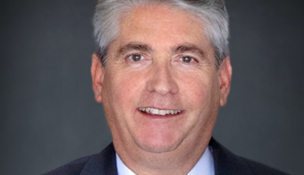Electra’s hybrid prototype aircraft takes first flight
Goldfinch flew 23 mins out of Manassas airport Nov. 19


Electra’s hybrid prototype aircraft takes first flight
Goldfinch flew 23 mins out of Manassas airport Nov. 19
This story was updated Dec. 1.
A Manassas aircraft manufacturer that’s developing an electric short takeoff and landing (eSTOL) aircraft logged a significant milestone Nov. 19 when it completed its first hybrid-electric flight.
Electra’s EL-2 Goldfinch took off from Manassas Regional Airport and flew 23 minutes, reaching an altitude of 3,200 feet and covered about 30 miles, the company said in a news release.
According to Electra, the company’s two-seat Goldfinch eSTOL is the world’s first aircraft to use blown-lift distributed electric propulsion powered by a hybrid-electric propulsion system. It relies on eight electric motors to increase wing lift and enable short takeoffs and landings on soccer-field-size spaces. It is also quieter than conventional airframes, while emitting fewer pollutants. Its turbogenerator can also charge the hybrid electric airplane during flight, eliminating the need for special charging infrastructure at every airport.
The Goldfinch was flown by Cody Allee, a former Navy jet fighter pilot who is now chief technology officer and chief test pilot at Maryland-based ABSI Aerospace & Defense, a provider of unmanned aircraft systems training and technology. Electra.aero Vice President and General Manager JP Stewart followed the Goldfinch in a Cessna 185.
Watching the flight was “the realization of a dream,” Stewart said. “The first flight showed that the airplane was stable, that it was controllable, that … the systems work great and are well understood in how we’ve modeled them, and now we start to expand that envelope,” Stewart said.
That expansion will include additional testing of different control inputs, including turning and pitching up and down, as well as flying at different speeds. While much of the first flight stuck largely between about 80 and 90 miles per hour, the aircraft can reach speeds of up to 200 mph; however, the emphasis should be on how slow the aircraft can fly, Stewart said. Unlike a traditional aircraft, it doesn’t require a long runway.
“That’s how you get into these really small spaces. The idea of what we’re pursuing with the short takeoff and landing is that you can start by flying from existing airports, and going airport to airport, because that’s known infrastructure … and you can replace aging airplanes and less efficient airplanes that are doing that mission already,” Stewart said. “Because you can get into these small spaces, as the market develops, you can start to land in vertiports or places that used to be the domain purely of helicopters.”
The Goldfinch flown on Nov. 19 is a prototype for a eSTOL aircraft the company is developing, targeted for commercial use by 2028, that can carry up to nine passengers or 2,500 pounds of cargo. That aircraft is intended to take off and land within distances as short as 150 feet and fly at up to 200 mph with a range of 500 miles, which could open up air travel to more regions while making it more affordable, more environmentally friendly and faster.
“The aim of Electra is to fill a gap in air travel between 50 and 500 miles, where most trips today are made by automobile. The key to saving time is to operate close in, which means getting in and out of small spaces quietly and safely, while still being fast enough to cover long distances,” Electra founder, CEO and Chairman John Langford said in a statement. “Electra will be able to take you from downtown Manhattan not only to [John F. Kennedy International Airport], but to Washington, D.C. It will bring air service to thousands of communities where air travel today is not a practical or affordable option. It also opens vast new opportunities for middle-mile cargo logistics.”
The Nov. 19 flight followed another that took off from the airport on Nov. 11; that all-electric flight was completed to test the aircraft’s electric battery system as a shakedown flight, Stewart said.
Electra has preorders from 30 customers for more than 1,700 aircraft, totaling a $6 billion backlog. In January, the company received an $85 million award from the Air Force to accelerate prototype development, testing and evaluation.
Langford founded Electra in 2020; the company has 40 employees and contractors. Langford previously co-founded Aurora Flight Services, a subsidiary of Arlington County-based Boeing. Langford also participates in the Virginia Innovation Partnership Corporation‘s Advanced Air Mobility Alliance and the company in 2023 received a VIPC Commonwealth Commercialization Fund grant as well as an investment from VIPC’s Virginia Venture Partners. The value of the grant and award were not available.
News of the Goldfinch’s flight follows an announcement that Virginia has joined a collaborative with seven other states to expand the advanced air mobility sector. On Nov. 29, Electra announced that Bristow Group, a Texas based company that provides helicopter offshore energy transportation and search and rescue services globally to governments and the civilian sector, made a deposit for five of its future aircraft, which it will use to expand and diversify its portfolio. Bristow signed a memorandum of understanding with Electra in 2021, preordering up to 50 aircraft.
This story has been corrected since publication.
l















